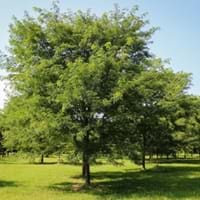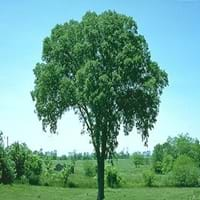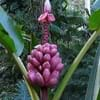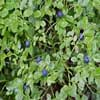Life Span
Annual
Perennial
Origin
China, Korea
North America
Types
Sophora japonica
Bergmann's Elm, Chestnut-leafed Elm, Hangzhou Elm
Habitat
Humid climates, Loamy soils, Low annual rainfall regions, Wet ground, Woods
Woodland Garden Canopy
USDA Hardiness Zone
5-9
3-9
Sunset Zone
2a, 2b, 3a, 3b, 4, 5, 6, 7, 8, 9, 10, 11, 12, 13, 14, 15, 16, 17, 18, 19, 20, 21, 22, 23, 24
1a, 1b, 2a, 2b, 3a, 3b, 4, 5, 6, 7, 8, 9, 10, 11, 14, 15, 16, 17, 18, 19, 20, 21
Habit
Oval or Rounded
Upright/Erect
Flower Color
White, Light Green
Green
Flower Color Modifier
Bicolor
Bicolor
Leaf Color in Spring
Dark Green
Light Green
Leaf Color in Summer
Dark Green
Dark Green
Leaf Color in Fall
Yellow, Dark Green
Light Yellow
Leaf Color in Winter
Not Available
Not Available
Leaf Shape
Elliptic
Ovate
Plant Season
Spring, Summer, Fall, Winter
Spring, Summer, Fall, Winter
Sunlight
Full Sun
Full Sun
Type of Soil
Clay, Loam, Sand
Loam
The pH of Soil
Acidic, Neutral, Alkaline
Acidic, Neutral
Soil Drainage
Average
Average
Bloom Time
Summer
Early Spring
Tolerances
Pollution, Drought, Soil Compaction
Pollution
Where to Plant?
Ground
Ground
How to Plant?
Seedlings, Transplanting
Budding, Grafting, Seedlings, Semi-hardwood cuttings, Softwood cuttings
Plant Maintenance
Medium
Medium
Watering Requirements
occasional watering once established, Requires watering in the growing season
Average Water Needs, Do Not over Water, Requires regular watering
In Summer
Less Watering
Lots of watering
In Spring
Less Watering
Moderate
In Winter
Drought Tolerant
Average Water
Soil pH
Acidic, Neutral, Alkaline
Acidic, Neutral
Soil Type
Clay, Loam, Sand
Loam
Soil Drainage Capacity
Average
Average
Sun Exposure
Full Sun
Full Sun
Pruning
Prune when young, Remove dead branches
Remove damaged leaves, Remove dead branches, Remove dead leaves, Remove dead or diseased plant parts, Remove deadheads
Fertilizers
All-Purpose Liquid Fertilizer
Complete balanced fertilizer, fertilize in spring
Pests and Diseases
Leaf spot, Red blotch, Woodpecker feeding
Red blotch
Plant Tolerance
Drought, Dry soil, Soil Compaction
Pollution
Flower Petal Number
Single
Single
Foliage Texture
Medium
Medium
Foliage Sheen
Matte
Matte
Attracts
Bees, Hummingbirds, Woodpeckers
Birds, Butterflies, Not Available
Allergy
Eczema, Nausea, Swelling in the face
Pollen
Aesthetic Uses
Bouquets, Landscape Designing, Showy Purposes
Not Used For Aesthetic Purpose
Beauty Benefits
Nourishes scalp, Restores Hair Colour, Stops hair loss
Good for skin and hair
Edible Uses
Sometimes
Yes
Environmental Uses
Air purification, Erosion control, Forms dense stands, Shadow Tree
Air purification, Nesting sites for birds, Shadow Tree
Medicinal Uses
Diuretic, Fever, Muscle Pain, Vomiting
Antispasmodic, Astringent, Birthing aid, Haemostatic, Salve
Part of Plant Used
Bark, Leaves
Bark, Fibre, Leaves
Other Uses
Used as a laxative, Used as firewood, Used as Ornamental plant, Used in construction
Container, String, Used for woodware, Used in paper industry
Used As Indoor Plant
No
No
Used As Outdoor Plant
Yes
Yes
Garden Design
Shade Trees, Street Trees, Topiary / Bonsai / Espalier
Feature Plant, Shade Trees, Street Trees
Botanical Name
SOPHORA japonica
ULMUS americana 'Augustine'
Common Name
Chinese Scholartree, Japanese Pagoda
American Elm, Augustine Elm
In Hindi
Gobur champ
American Elm Tree
In German
Japanischer Schnurbaum
Amerikanische Ulme
In French
Styphnolobium japonicum
Américaine Elm Tree
In Spanish
Styphnolobium japonicum
Olmo Americano Árbol
In Greek
Styphnolobium japonicum
American Elm Tree
In Portuguese
Styphnolobium japonicum
Árvore de olmo americano
In Polish
Perełkowiec japoński
Amerykańska Elm Tree
In Latin
Styphnolobium japonicum
Latin ulmo
Phylum
Angiosperms
Magnoliophyta
Class
Magnoliopsida
Magnoliopsida
Genus
Styphnolobium
Ulmus
Clade
Angiosperms, Eudicots, Rosids
Angiosperms, Eudicots, Rosids
Tribe
Sophoreae
Not Available
Subfamily
Faboideae
Not Available
Number of Species
Not Available
Not Available
Season and Care of Japanese Pagoda and American Elm
Season and care of Japanese Pagoda and American Elm is important to know. While considering everything about Japanese Pagoda and American Elm Care, growing season is an essential factor. Japanese Pagoda season is Spring, Summer, Fall and Winter and American Elm season is Spring, Summer, Fall and Winter. The type of soil for Japanese Pagoda is Clay, Loam, Sand and for American Elm is Loam while the PH of soil for Japanese Pagoda is Acidic, Neutral, Alkaline and for American Elm is Acidic, Neutral.
Japanese Pagoda and American Elm Physical Information
Japanese Pagoda and American Elm physical information is very important for comparison. Japanese Pagoda height is 1,220.00 cm and width 1,220.00 cm whereas American Elm height is 3,900.00 cm and width 3,700.00 cm. The color specification of Japanese Pagoda and American Elm are as follows:
Japanese Pagoda flower color: White and Light Green
Japanese Pagoda leaf color: Dark Green
American Elm flower color: Green
- American Elm leaf color: Light Green
Care of Japanese Pagoda and American Elm
Care of Japanese Pagoda and American Elm include pruning, fertilizers, watering etc. Japanese Pagoda pruning is done Prune when young and Remove dead branches and American Elm pruning is done Remove damaged leaves, Remove dead branches, Remove dead leaves, Remove dead or diseased plant parts and Remove deadheads. In summer Japanese Pagoda needs Less Watering and in winter, it needs Drought Tolerant. Whereas, in summer American Elm needs Lots of watering and in winter, it needs Average Water.





